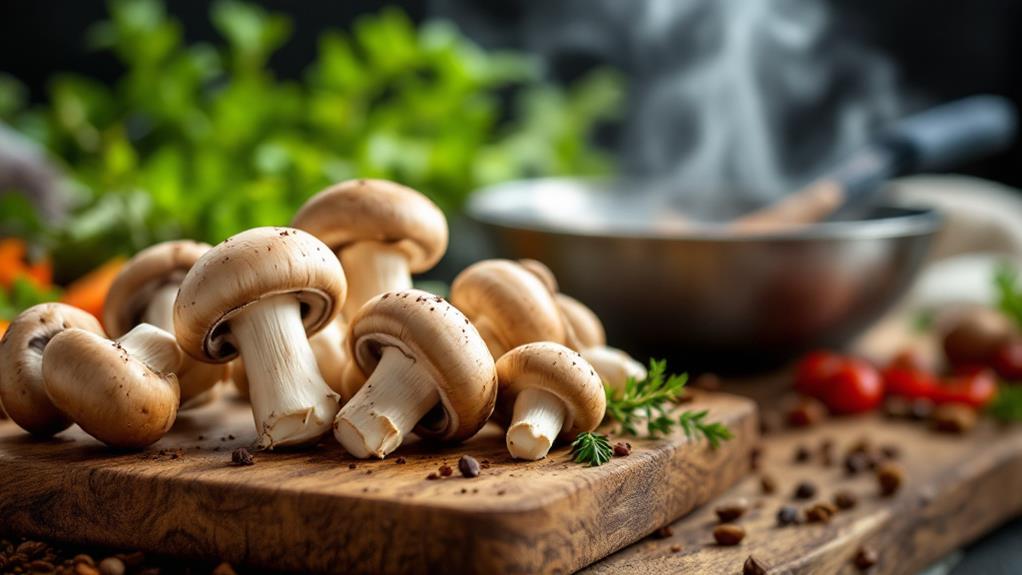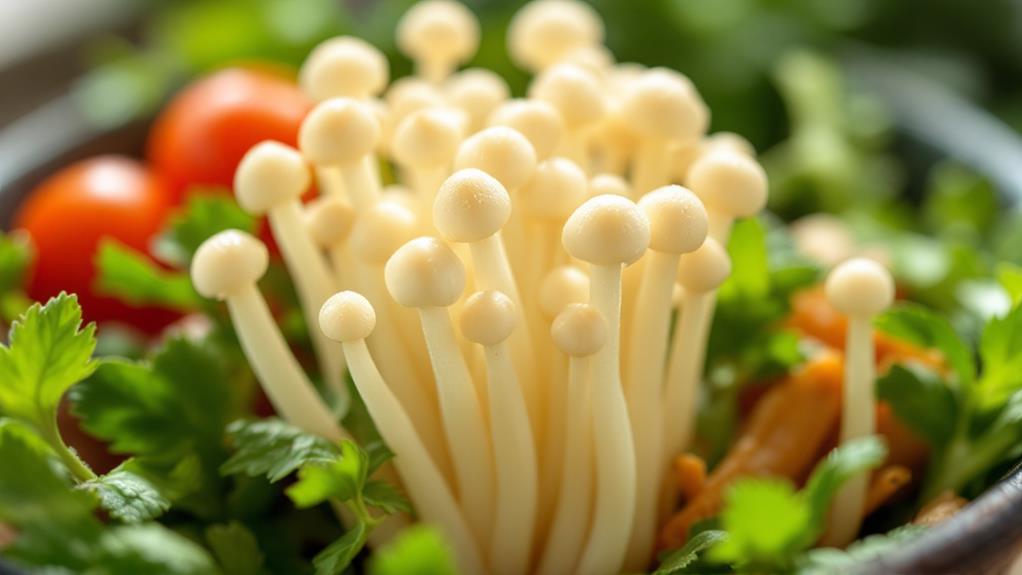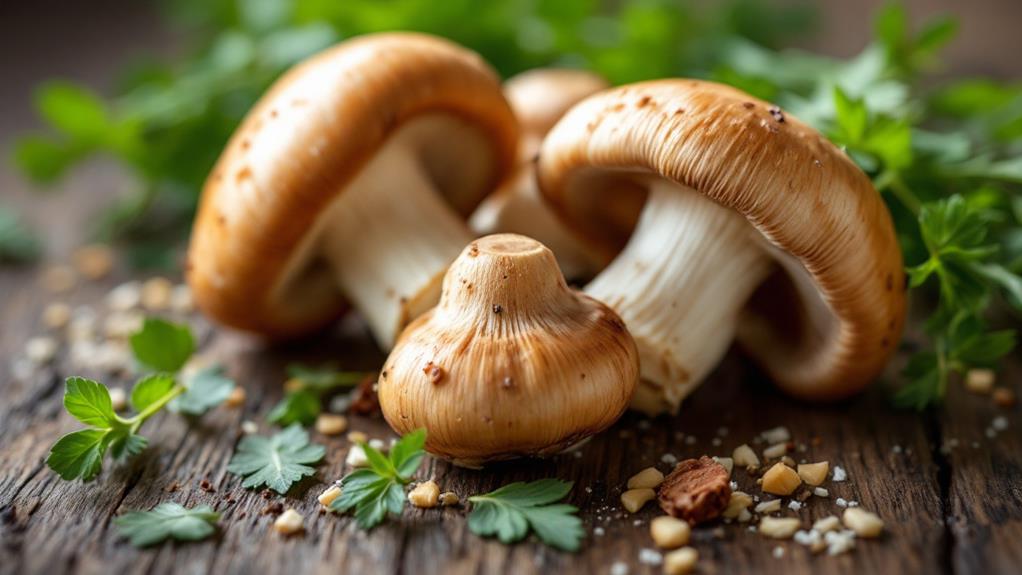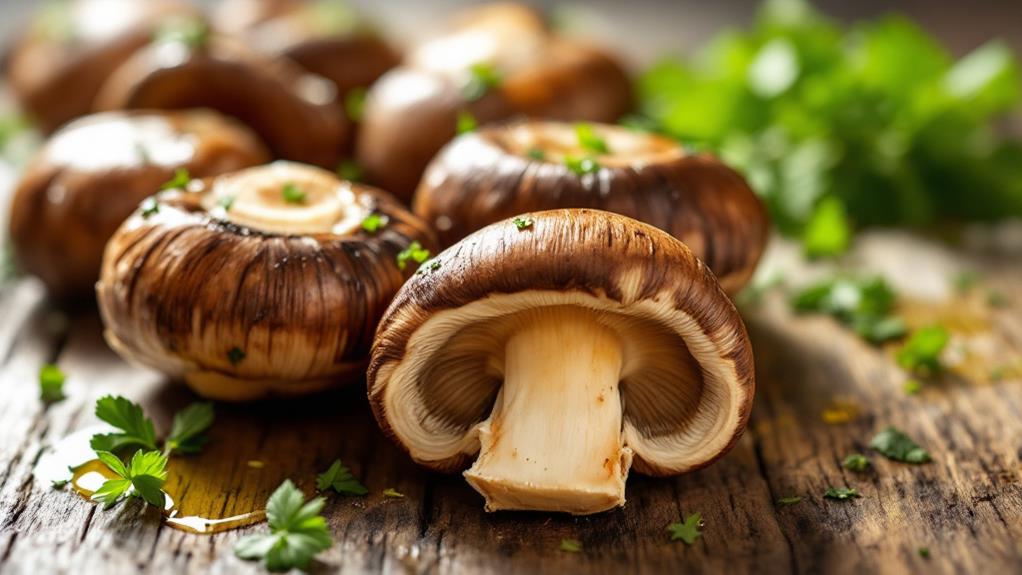Morel Mushrooms: Health Benefits and How to Enjoy Them
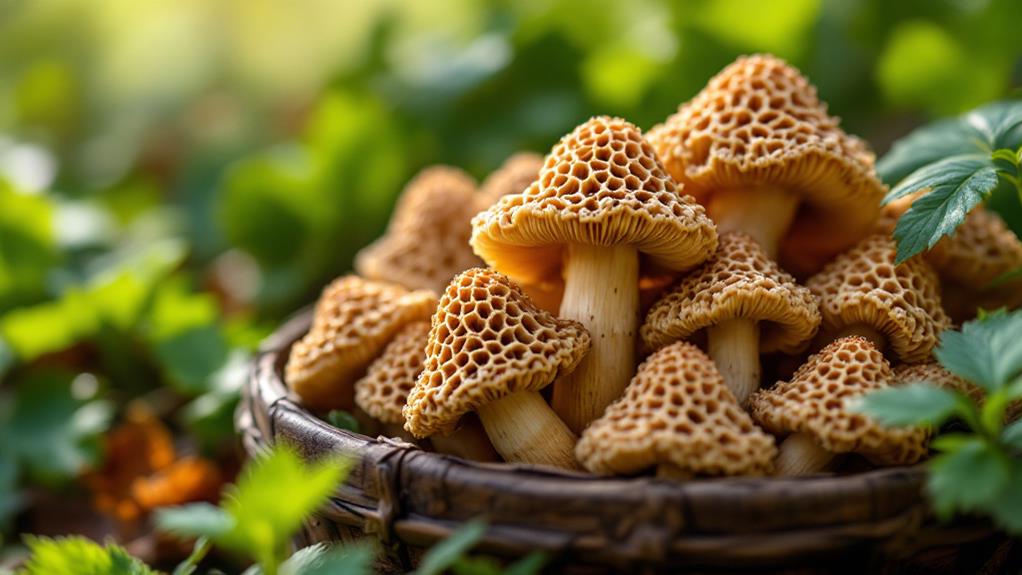
Morel mushrooms aren't just a flavorful treat; they're packed with health benefits. With low calories and rich in protein, iron, and vitamin D, they're great for muscle health, energy, and strong bones. Morels are also high in dietary fiber, supporting gut health, and contain antioxidants to combat chronic diseases. Their antimicrobial properties further protect against harmful pathogens. Enjoy morels in sautés, risottos, or soups, but verify they're cleaned and cooked well to improve their taste and safety. Regardless of being foraged or purchased, morels add a gourmet touch and significant health perks to your meals. Uncover more about these incredible mushrooms.
Understanding Morel Mushrooms
In regard to understanding morel mushrooms, their distinct honeycomb appearance immediately sets them apart. You'll often find these elusive fungi foraged from forested areas, especially in spring. Because they're difficult to cultivate, morels are a rare delicacy, often fetching high prices in the market. Their rich earthy flavor improves a variety of gourmet dishes, making them a prized ingredient in culinary applications. When searching for morels, note that they typically grow in clusters near specific trees like ash, elm, hickory, and sycamore, and are more likely to appear after forest fires.
Accurate identification of morel mushrooms is essential, as their lookalikes, known as false morels, harbor toxic species containing harmful gyromitrin. Your ability to distinguish between these fungi can mean the difference between a delightful meal and a dangerous one. Morels' distinctive honeycomb appearance helps, but extra caution is warranted. Foraging them safely allows you to enjoy not only their unique taste but also their health benefits, as they're packed with antioxidants and other nutrients. So, regardless of whether you're a seasoned forager or a culinary enthusiast, understanding these mushrooms' characteristics is vital to safely enjoying their gourmet potential.
Nutritional Value
Morel mushrooms' nutritional profile makes them a fantastic supplement to your diet. They offer a low-calorie food choice, with just 31 calories per 100 grams, allowing you to enjoy their unique flavor without worrying about calorie overload. Packed with 3.1 grams of protein per 100 grams, morels contribute to muscle health and repair, making them a great enhancement to meals for active individuals or those focusing on fitness.
Morels are also rich in vital minerals, particularly iron, providing 12.2 mg per 100 grams. This high iron content helps meet your iron requirements, preventing anemia and increasing energy levels. Furthermore, they're an excellent source of vitamin D, offering 136 IU per 100 grams. Vitamin D is fundamental not only for bone health but also for maintaining a robust immune function, helping your body ward off infections.
Moreover, morel mushrooms are high in dietary fiber, which supports digestive health and keeps your gut microbiome balanced. This dietary fiber promotes regular bowel movements and aids in comprehensive gut health. Incorporating morels into your diet provides numerous health benefits, making them a wise and delicious choice for enhancing your nutritional intake.
Health Advantages
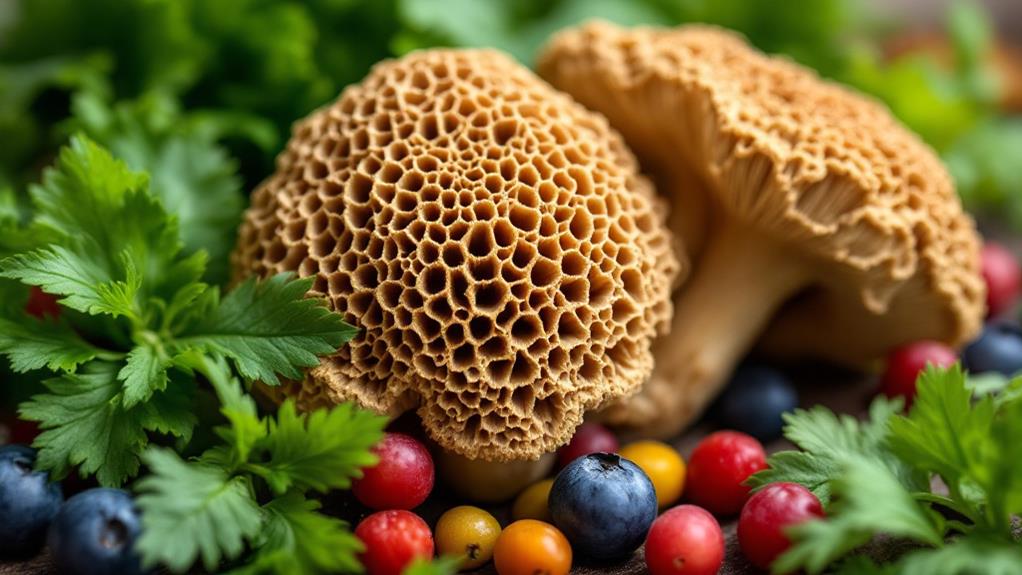
Among the many health advantages of morel mushrooms, their rich antioxidant content stands out, helping you combat oxidative stress and potentially lowering the risk of chronic diseases like cancer and heart disease. These antioxidants are important in neutralizing free radicals, keeping your body in ideal health. Morel mushrooms also offer significant health benefits through their high iron content, boasting about 12.2 mg per 100 grams. This makes them an excellent choice if you're looking to meet your iron requirement, particularly useful if you're combating anemia.
Furthermore, morel mushrooms are a reliable source of vitamin D, providing 136 IU per 100 grams. This vitamin is necessary for maintaining bone health and enhancing your immune system. With their high fiber content, morels also support digestive health, acting as prebiotics to foster a healthy gut environment. This fiber is critical for keeping your digestive system running smoothly.
Moreover, the antimicrobial properties of morel mushrooms can help block harmful bacteria and fungi, offering another layer of protection for your general health. Plus, they're low in calories, making them a great enhancement to a balanced diet without adding extra pounds. Enjoy these delicious mushrooms while reaping their many health benefits.
Culinary Uses
Renowned for their culinary versatility, morel mushrooms can improve a range of dishes with their unique earthy taste. They're a delight in sautés, risottos, soups, and sauces, offering a rich umami flavor that raises your meals to gourmet status. To prepare morel mushrooms, you should thoroughly clean them to remove any grit or dirt. Once cleaned, they can be sautéed in butter or olive oil, and seasoned with garlic and herbs for a sumptuous flavor profile.
Their earthy flavor pairs well with different ingredients, making them a perfect supplement to versatile dishes. Morels work beautifully with meats like game and poultry, adding depth to pasta dishes, and complementing an assortment of vegetables. This adaptability makes them a staple in any gourmet kitchen.
Dried morels offer the extra benefit of a longer shelf life. By rehydrating them, you can enjoy their distinct flavor year-round, guaranteeing they're always ready for your next culinary venture. Remember to cook them thoroughly for about 15 minutes, not only to improve flavor and texture but also to confirm they're safe to eat. Morel mushrooms are truly a gourmet supplement to any meal.
Identifying Morels
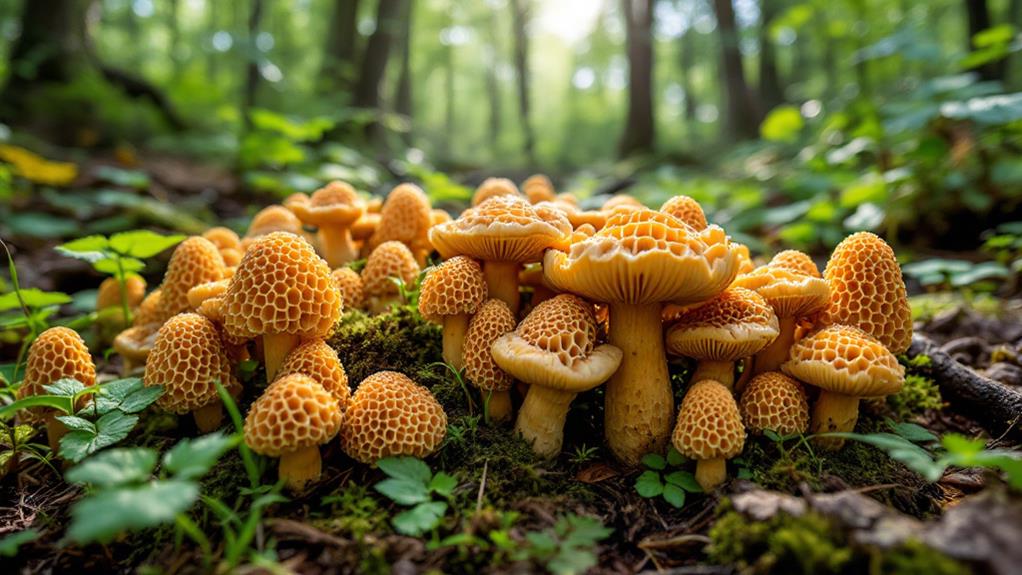
With their distinctive, honeycomb-like appearance, morel mushrooms are easy to spot, especially when you're aware of their unique characteristics. These edible mushrooms have a spongy, pitted cap that ranges from yellow to dark brown, setting them apart from other mushrooms. When identifying morels, it's vital to look for their hollow stems and caps, which are key features that differentiate them from false morels. False morels contain the toxic compound gyromitrin and often have irregular shapes, posing a risk if misidentified.
To confidently identify morel mushrooms, consider their preferred growing conditions. They commonly grow near specific types of trees, such as ash, elm, hickory, and sycamore, in moist, well-drained soil. These mushrooms often appear in clusters, especially after forest fires, making them a fascinating find during foraging.
For further confirmation, check the spore print: true morels produce a pale cream to white spore print, whereas false morels may show a darker variation. To guarantee safety and accuracy, always consult reliable field guides or seek advice from local experts before foraging. Proper identification not only improves your foraging experience but also lets you enjoy the health benefits of these remarkable mushrooms.
Foraging Tips
When setting out to forage for morel mushrooms, understanding their growth patterns and environment is vital. These edible mushrooms often thrive in forested areas, particularly near trees like ash, elm, hickory, and sycamore. They frequently appear in clusters, especially after forest fires, which can create the ideal conditions for their growth. Timing is everything, so pay attention to the foraging season, typically from April to May. However, this can vary based on your geographic location and local climate conditions, so always keep those factors in mind.
To successfully identify true morels and avoid health risks, utilize online resources, field guides, and local maps. These tools will help you distinguish true morels from their toxic look-alikes. When you find them, remember to harvest morels by cutting at the base of the stem rather than pulling them out, as this promotes regrowth and sustainability in the area. Always carry a reliable identification guide to guarantee you're collecting the right mushrooms. Following these foraging tips will not only improve your chances of a successful harvest but also guarantee a safe and enjoyable experience in the great outdoors.
Cooking Guidelines
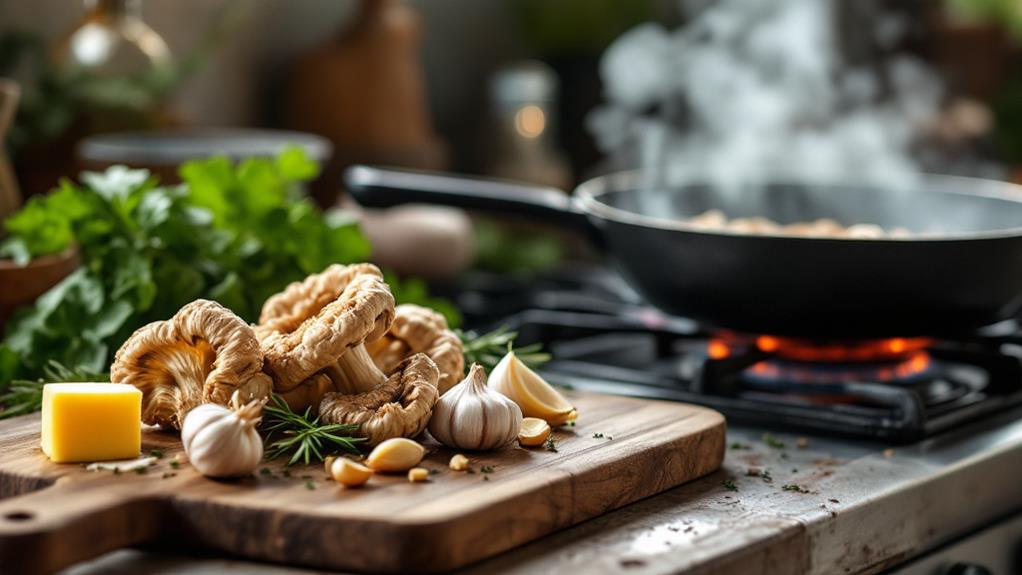
Cooking morel mushrooms is an art that begins with proper cleaning. Before you cook them, verify your morel mushrooms are thoroughly cleaned by soaking them in warm saltwater. This will help remove dirt and debris since they can harbor grit. Once cleaned, it's vital to cook fresh morels for at least 15 minutes to eliminate potential toxins and prevent gastrointestinal discomfort. This step is necessary for you to enjoy their unique flavor along with their health benefits.
Morels are incredibly adaptable in the kitchen. After you've cooked them, they make excellent additions to risottos, sauces, or as a simple side dish. One popular method is to sauté them with butter and garlic. This improves their earthy flavor, making your meal both delicious and nutritious. If you're using dried morels, rehydrate them by soaking in warm water for about 20-30 minutes. This process preserves their taste and allows them to be used in different dishes.
Storage Solutions
After enjoying the culinary delights of morel mushrooms, proper storage guarantees you maintain their quality and flavor. Fresh morels should be stored in the refrigerator and consumed within three days to prevent spoilage and mold growth. To maintain their quality, avoid washing fresh morels until just before cooking. When you're ready to cook, soak them in warm saltwater for about 30 minutes. This step helps to remove dirt and debris effectively.
For longer storage, consider drying or freezing your morels. Dried morels can be an excellent alternative, as they keep well and can be rehydrated in warm water before using them in your favorite recipes. To freeze morels successfully, confirm they're cleaned and blanched initially. Blanching preserves their flavor and texture, allowing you to store them for several months.
Potential Drawbacks
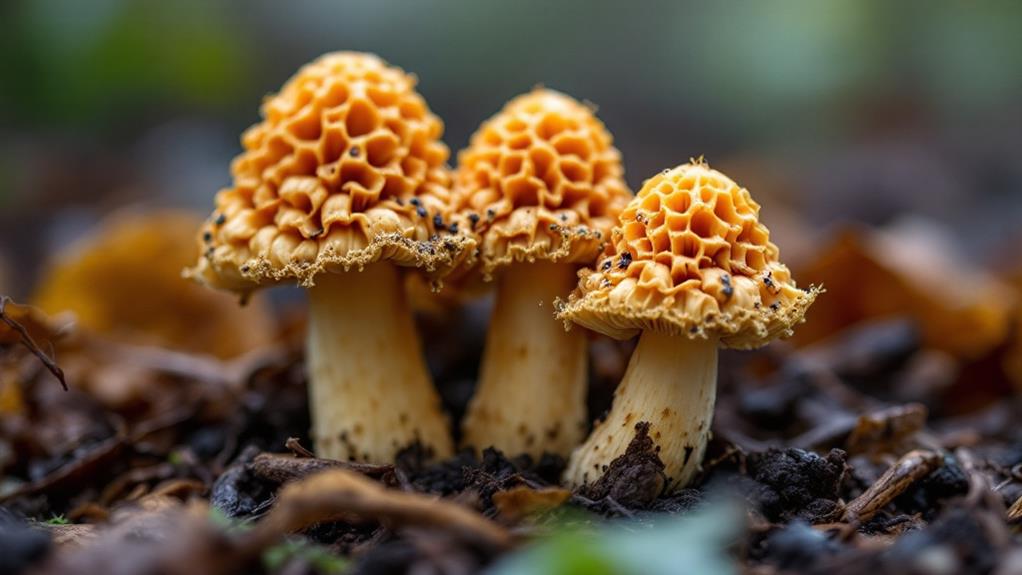
Delving into the world of morel mushrooms, it's imperative to be aware of their potential drawbacks. One major concern is the risk of misidentification with toxic varieties like false morels, which contain gyromitrin. This compound can cause severe gastrointestinal symptoms if consumed. Consequently, accurately identifying morel mushrooms is significant before consumption. Furthermore, they must be thoroughly cooked for at least 15 minutes to eliminate any potential toxins. Eating raw or undercooked morels can lead to digestive distress, making proper preparation critical.
Another aspect to contemplate is the limited availability of morel mushrooms. Their scarcity and the foraging expertise required make them more expensive compared to cultivated mushrooms. This can limit access for some consumers, making them a special treat rather than a staple.
For those with mushroom allergies or sensitivities, morels may trigger adverse reactions like stomach upset, hives, or itching. It's vital to be cautious and perhaps consult with a healthcare professional if you're unsure about your tolerance. Finally, overconsumption can result in gastronomic issues, so it's wise to enjoy morels in moderation. This guarantees you savor their unique flavor without experiencing discomfort.

